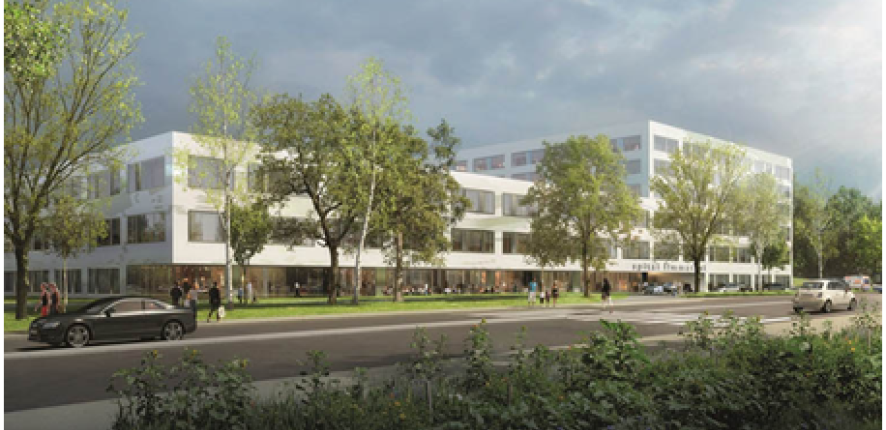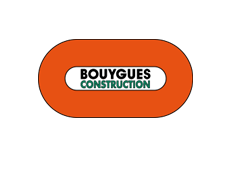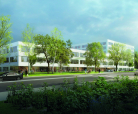Construction of a major hospital project is launched in Switzerland

Pascal Minault, CEO of Bouygues Entreprises France-Europe, said: “This contract illustrates our development in the healthcare sector in Switzerland, where investments of some €20 billion are expected over the next 15 years. Losinger Marazzi is benefiting from the expertise of the Bouygues Construction Group, which has completed dozens of hospital projects in recent years in France, the United Kingdom, Canada and other countries.”
This project, which is worth roughly €175 million to Bouygues Construction, covers the design and construction of a 50,000 m² building on eight storeys, with a capacity of 200 beds. The hospital will incorporate a car park and technical facilities on two basement levels, a restaurant, administrative offices, laboratories, x-ray facilities, five operating theatres, an A&E department and a maternity unit.
Geothermal probes will enable the hospital to benefit from zero-carbon energy in line with its commitment to the principles of sustainable development.
Developed with the use of BIM (Building Information Modeling), this project is a first in Switzerland with digital modeling carried out collaboratively by architects, civil engineers and HVAC and plumbing specialists. This is a reliable and efficient mode of design which makes it easier to take the customer’s wishes into account.
300 people will be working onsite at peak periods. The fitting out phase will begin in autumn 2016 and the hospital is scheduled to open to the public in 2018.
Losinger Marazzi specialises in developing and constructing high value-added projects. Bouygues Construction’s Swiss subsidiary possesses acknowledged know-how in “multi-product” operations, which include offices, shops, housing or premises serving other functions. Sustainable construction is central to Losinger Marazzi’s strategy. It is currently developing several eco-neighbourhoods: GreenCity in Zurich, Erlenmatt in Basel and Im Lenz in Lenzburg. It has also constructed buildings of great architectural complexity, such as the Rolex Learning Center at the Ecole Polytechnique Fédérale de Lausanne and the Maison de l’Ecriture.

